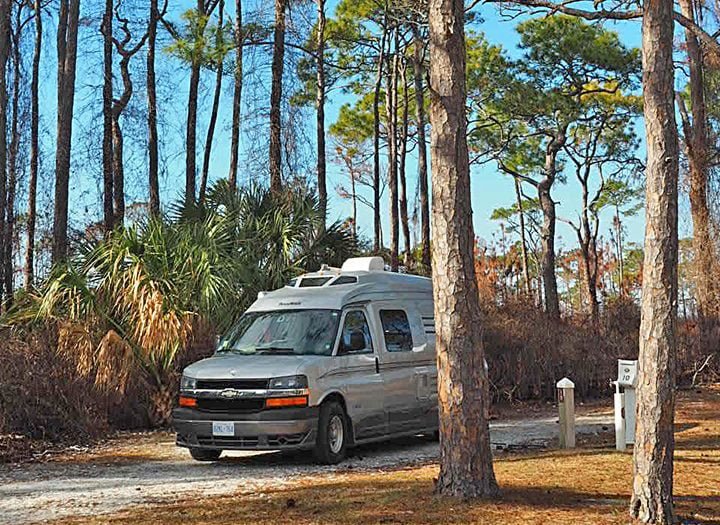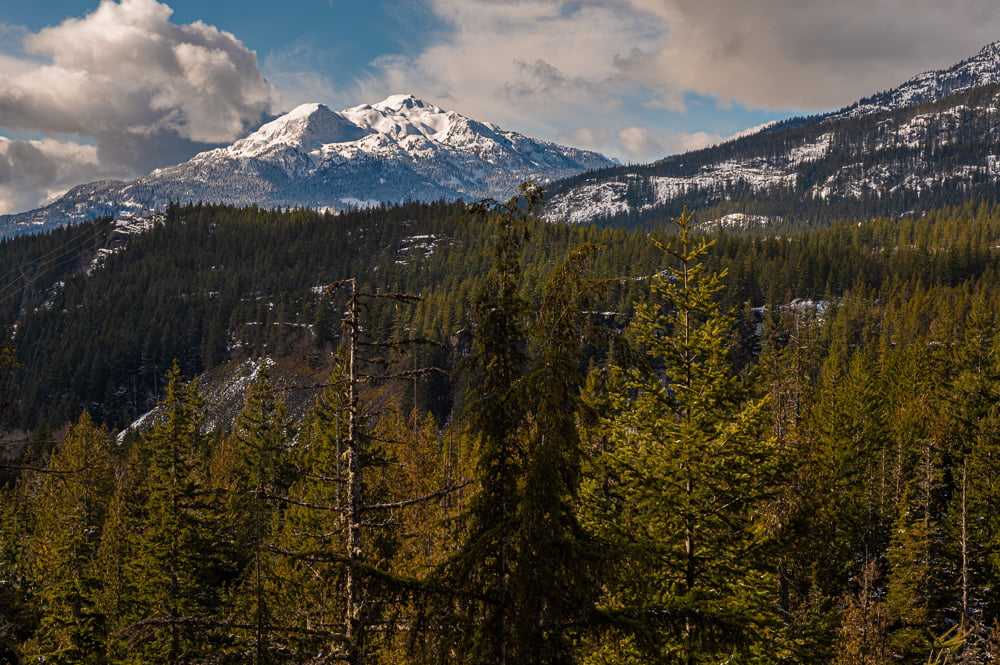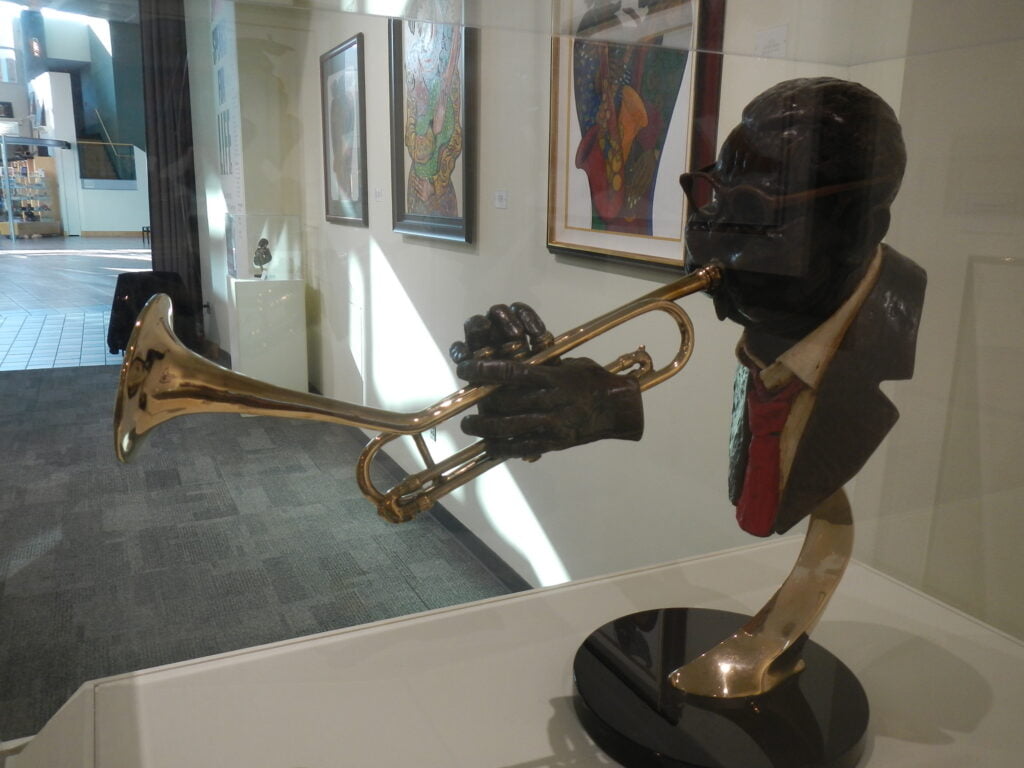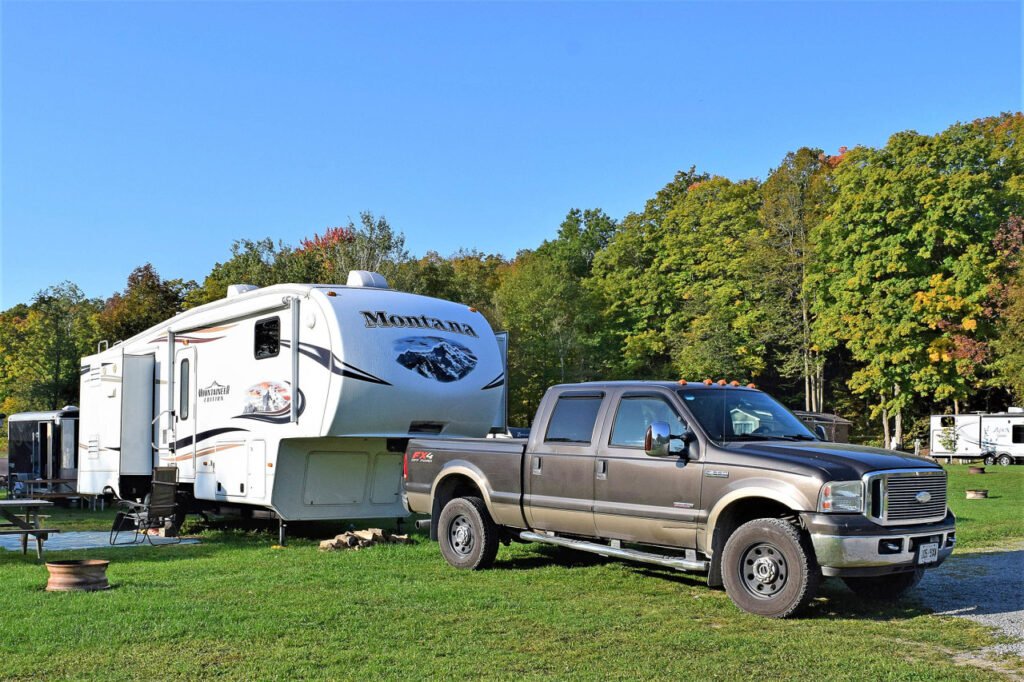Many snowbird RVers are wondering how to handle their travel plans this winter. Like many others, we have put our plans to travel south on hold. At this point in time we don’t know when the border will open, but we are also choosing to err on the side of caution when it comes to health-related risks.
Travel to the Florida Panhandle is a favourite winter RV destination for us. We are looking forward to making it happen when it is safe to do so – and we’re already talking about it and planning for winter 2021/2022
The bartender is waving a clipboard in the air, recruiting signups for the weekly open mic night. There’s hardly a stool or chair left but that doesn’t seem to faze the mix of locals and tourists – they stand, lean and wander about. There’s a lot of visiting happening as everyone orders drinks and waits for the music to start. A couple of local dogs weave their way through the crowd.
It’s Wednesday evening at the High Five Dive Bar in Apalachicola, one of the Old Florida-style towns along the stretch known as the Forgotten Coast, the far eastern part of the Florida Panhandle. The Panhandle is the northwest reach of the state – shaped like the handle of a fry pan – with the blue-green waters of the Gulf of Mexico lapping its shoreline. In the coldest winter months you might not want to dip your toe into the surf, but from autumn through spring the Panhandle is perfect for long walks along dune-lined beaches, gazing up at a canopy of stars, tossing in a fishing line and cooking up the catch. Some days may be blustery but other ones will be delightfully warm and sunny. From east to west, the Forgotten Coast has 320 kilometres of coastline, five islands, 99 historic sites, as well as campgrounds and state parks that RVers can call home.
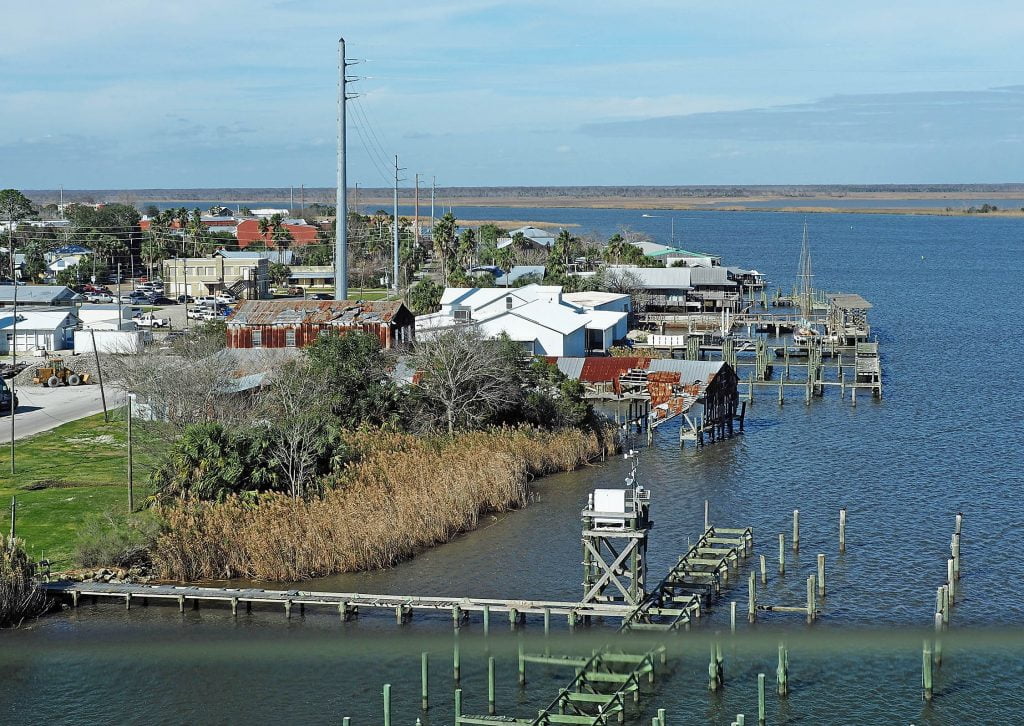
A view of the waterfront at Apalachicola. The small town is renowned for its fresh oysters and the harbour is busy with fishing craft. Apalachicola is along the part of the eastern Florida Panhandle known as the Forgotten Coast.
The embrace of Old Florida
The Forgotten Coast has towns, all of them small, all with character and a few – like Mexico Beach – that took the brunt of Hurricane Michael’s Category 5 winds in 2018. But the debris has been cleared, reconstruction is underway and the towns to the east of landfall have recovered nicely.
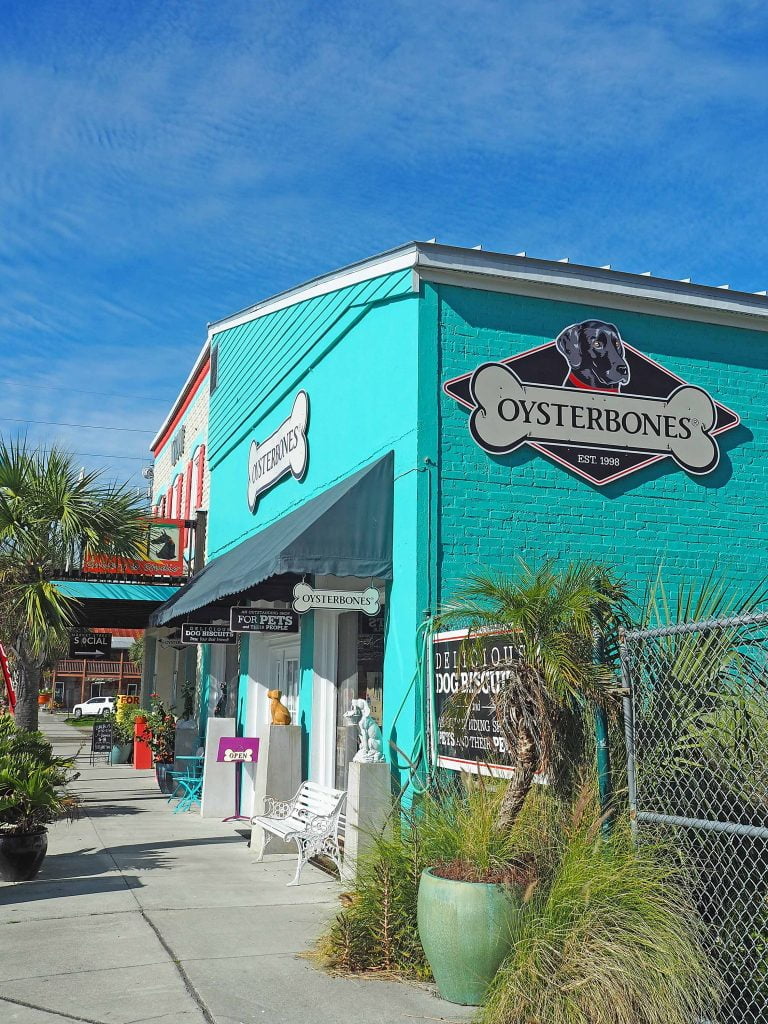
Downtown Apalachicola has many small shops with goods that would be of interest to visitors. Apalachicola is on the mainland Florida Panhandle, close to the bridge to the barrier island of St. George Island.
Our favourite has to be Apalachicola, renowned for its maritime history, oyster catch and a lightly gentrified downtown with kitchenware shops, seafood grills, upmarket clothing stores, art galleries and even a stylin’ place selling pet bling. At the laidback High Five Dive Bar there were plenty of Jimmy Buffett t-shirts on display and the tunes skewed toward the 60s and 70s. But at its heart, the town is still a part of Old Florida in all the best ways: no high rises, no interstates, no tawdry strip malls and not a theme park in sight. There’s still a working waterfront where the shrimp boats come and go. Oysters were Apalachicola’s maiden seafood industry, harvested by wooden skiff back in the 1800s, much the same as they are today.
Just across a short bridge is Eastpoint, the jumping off community to the nearby barrier island of St. George. Eastpoint is a great place to restock, visit the bank and check out the local library (we timed it perfectly – being welcomed warmly by the locals who were hosting a combination book-soup-bread sale). It’s also the spot along the Forgotten Coast where you can turn due south, drive along a voluptuously arching seven-km bridge crossing Apalachicola Bay to St. George Island, a barrier island and a real treasure. We usually stock up in Eastpoint or Apalachicola before arriving, because once settled into our campsite we just don’t want to leave.
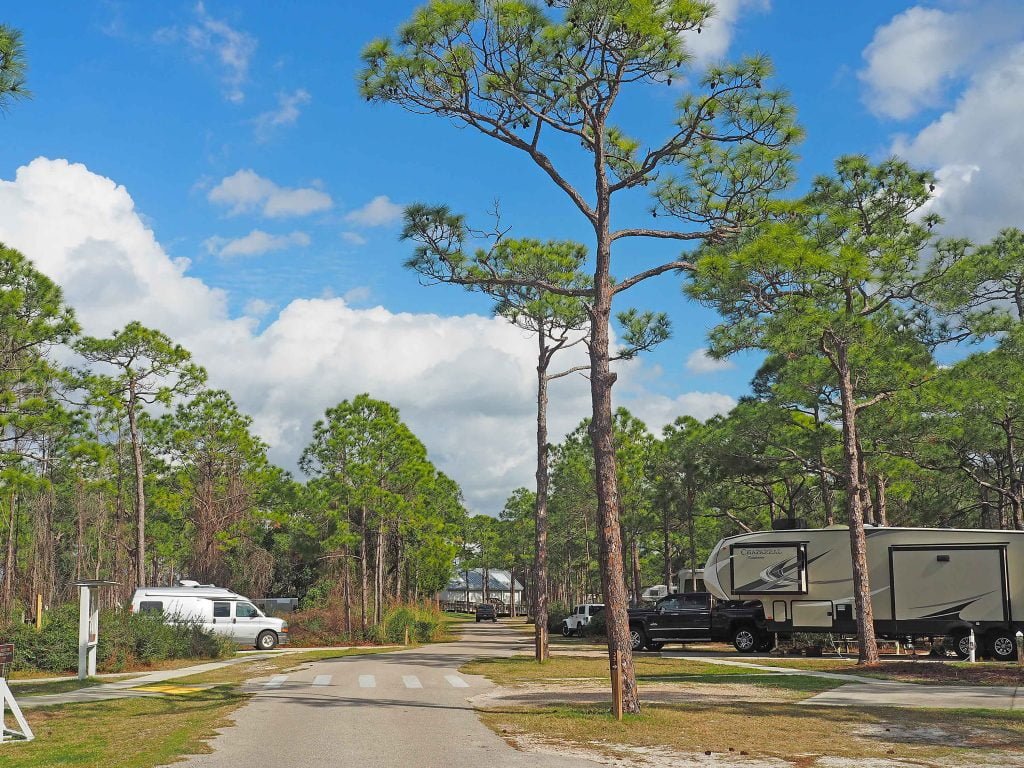
St. George Island State Park has spacious sites, many are pull-through and can accommodate larger RVs.
For campers and RVers, Dr. Julian G. Bruce St. George Island State Park (most commonly called St. George Island State Park) is a jewel of the Forgotten Coast and one of Florida’s best-kept secrets. The park has a full-facility campground (electricity, water hook-ups, dump station and two comfort stations with showers) with 60 sites, including several pull-through. While (like many Florida state parks) it books up quickly, we’ve had luck on several visits getting space when there’s been a last minute cancellation. One of the advantages of travelling in a compact, quick setup Roadtrek camper van is that we can “stitch together” space at different sites and move easily as needed, according to availability.
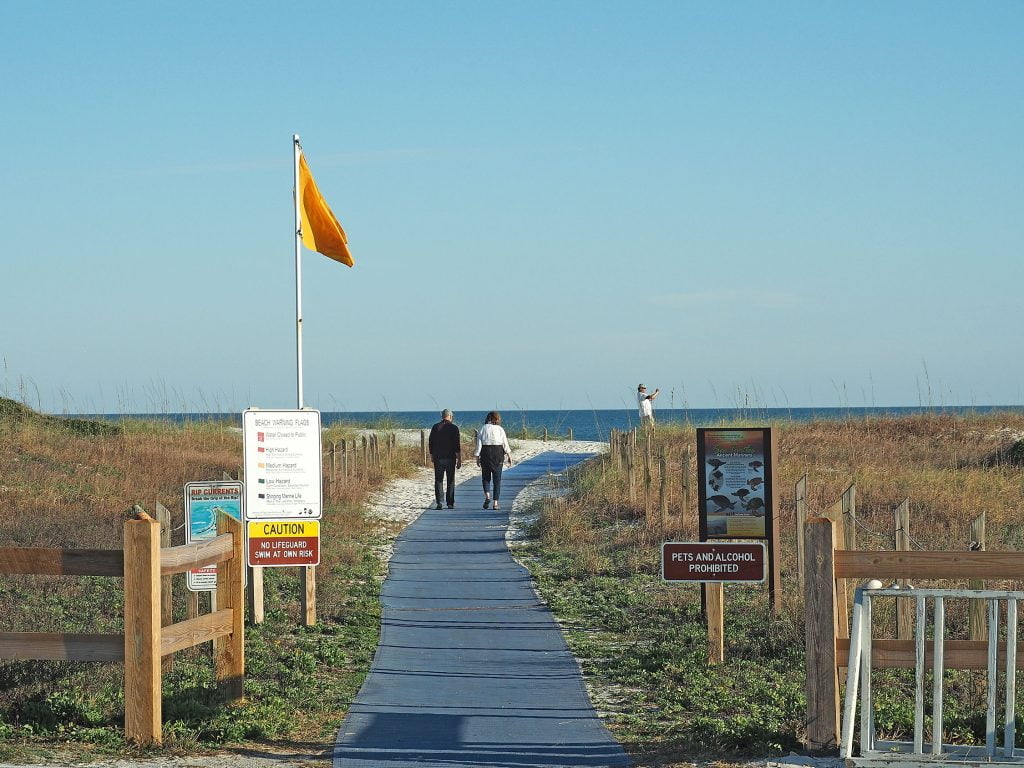
The boardwalk that leads to the long expanse of dunes and sand beach along the Gulf of Mexico at St. George Island State Park. The park is a Dark Sky Preserve and a perfect spot for nighttime star gazing.
St. George Island is our happy place for relaxation and rejuvenation. The park has 14-kms of pristine sand beach (dogs are not allowed on the beaches but are allowed, leashed, on the hiking trails) for swimming, sitting in the glorious sunshine, shelling, surf fishing and just walking.
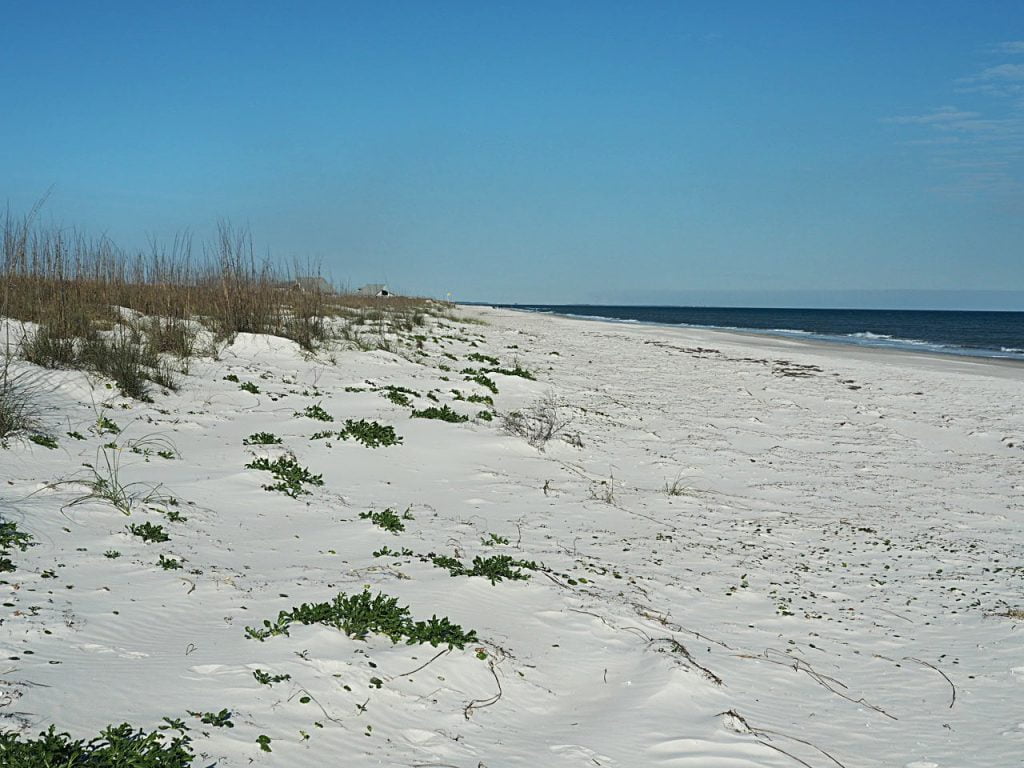
The long stretch of sand beach at St. George Island State Park borders the waters of the Gulf of Mexico. In shoulder seasons especially, the beach is often quiet and perfect for long walks. The sand dunes, however, are protected because of their fragile nature.
The park should be on every naturalist’s radar. Its undeveloped white sand beaches have the second highest density of nesting loggerhead, green and leatherback sea turtles in the entire Florida Panhandle. During nesting season, volunteers check the beach for signs of the turtles, then mark and protect the nests to monitor the incubation process. The park protects these “ancient mariners” for both the laying and hatching of eggs. Park Ranger George “Skip” Schipper estimates the odds: “We see about 113 to 130 nesting’s each year, with dozens of eggs in each nest, but only one of a thousand hatchlings makes it to adulthood.”
St. George Park’s staff is working towards designation as a Dark Sky Park with the International Dark Sky Association. With the minimal light pollution at the barrier island, we’ve often been able to see Jupiter and Saturn, as well as the Milky Way. On one of our stays, Ranger Schipper led a group of campers on a nighttime interpretive program at the beachfront, using binoculars to watch a rare, bright “super blue moon.”
We always try to celebrate sunrise or sunset with a walk along the almost-deserted stretch of beach, but mid-day we head along the park’s 4km Gap Point nature trail. It winds through tall pine forests and coastal scrub with overlooks to the sandy coves and salt marshes of St. George Island Sound. During the early 20th century (long before the park was established in 1980) the island’s slash pine forests were turpentined; the crude resin was distilled to produce gum syrups or oil of turpentine.
A stretch of coast for meandering
While scoring a camping reservation can be a challenge, tearing ourselves away rises to a whole other level. We never want to leave St. George Island but there is a beautiful stretch of the Forgotten Coast that is just ripe for meandering.
We could spend days slowly (oh-so slowly) exploring the 77 km stretch from St. George Island to Alligator Point (the far eastern part of the Forgotten Coast). At the base of the bridge near Eastpoint, the Apalachicola National Estuarine Research Reserve’s interactive Nature Center exhibits and elevated boardwalks lead visitors toward an understanding and appreciation of the region’s unique ecology of the river, estuary, bay and Gulf. The bay system acts as a critical nursery for sea life including shrimp, blue crab, stone crab and finfish.
We barely made it to the small community of Carrabelle before stopping for lunch at the roadside park and picnic shelter and another chance to wiggle our toes in the sand. We popped open our collapsible chairs at the nearly deserted beach and nosedived into some reading time (all with the relaxing rhythm of waves gently lapping the shore). Not far out, a pair of dolphins played in the waves. Carrabelle is a popular spot for campers, with a full-service RV resort. People are drawn here by the deep-water harbour, excellent fishing, abundant seafood and easy access to rivers for kayakers and boaters.
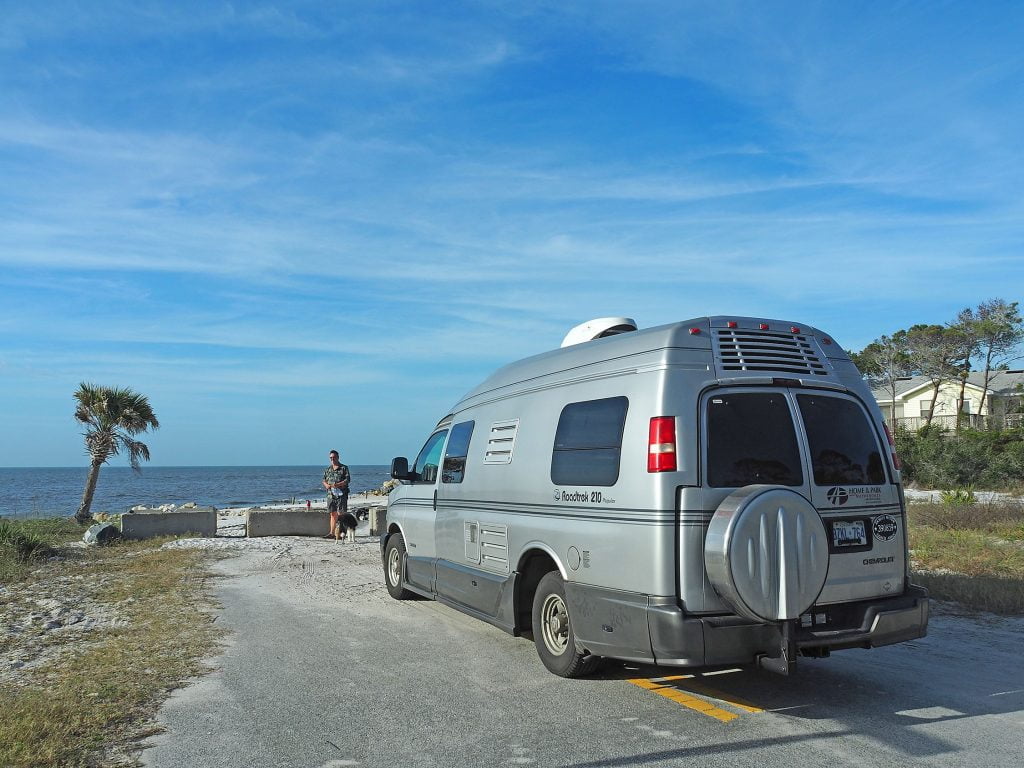
While the community of Alligator Point does not have any campgrounds, it is a fantastic spot to stop and enjoy the beaches, go fishing or to launch a boat and explore the bay area.

Alligator Point
At the far eastern end of the Forgotten Coast, we detoured through scenic Alligator Point, a long, thin peninsula of sea oat-covered sand dunes between the Gulf of Mexico and Alligator Harbor, an area known for its clam harvesting. The rural community of Alligator Point has many vintage beachfront vacation rentals, several public boat ramps, a full-service marina and fishing charters that specialize in inshore saltwater and offshore saltwater, but no campgrounds. Nearby is Bald Point State Park, a day park that is well known for hiking trails and as a stopover for migrating birds and butterflies who are drawn to the park’s diverse habitats.
Here is the way we usually leave the Forgotten Coast: we start flipping through our calendar to scout the possibility of adding on days, we reroute our plans and extend our stay, rationalizing it by the good weather, the peaceful surroundings, the long beach walks, the short hikes through the pine forest, the dazzling nighttime skies. In the end, it’s rather simple – we go because we love this part of Florida and we stay because it is good for our souls. It may be nicknamed the Forgotten Coast but it’s a spot we never forget.
www.Floridasforgottencoast.com
Lead photo: St. George Island State Park on a barrier island just off the Forgotten Coast has spacious sites with hookups. The island is pristine, with tall palm, wooded trails through stands of slash pines and back bays for kayaking.

